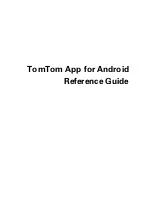
Data Definition Language (DDL) Reference Manual — 426798-002
D- 1
D
Dictionary Database Structure
A DDL dictionary is itself a DDL database consisting of 14 files. DDL supplies the
names of the dictionary database files; these names must not be changed.
This appendix describes the structure of the dictionary database in detail, covering the
following topics:
•
Basic components of a dictionary: objects, elements, and text items
•
Files that make up the dictionary database: their names, their structure, and what
they contain
•
Fields in each file: their names, data types, sizes, and functions
•
Object storage in the dictionary
•
Possible database links between dictionary files
Dictionary Components
A DDL dictionary deals with three basic components: objects, elements, and text
items.
An object can be a single element, as in the case of a single-field definition or a
constant, or a group of elements, as in the case of a record, a group definition, or a
token map.
The DDL compiler manages six kinds of objects:
•
Constants
•
Definitions
•
Records
•
SPI token types
•
SPI token codes
•
SPI token maps
DDL can add these objects to and delete them from a dictionary, as well as perform
other operations on them.
If a DDL dictionary is part of a Pathmaker application catalog, the Pathmaker product
can store additional objects in the dictionary. The Pathmaker product manages four
kinds of objects that it can store in a DDL dictionary:
•
Servers
•
Services
•
Requesters
•
Screens
Note. Information in this appendix is not guaranteed to remain the same or to change in
compatible ways from release to release.
















































